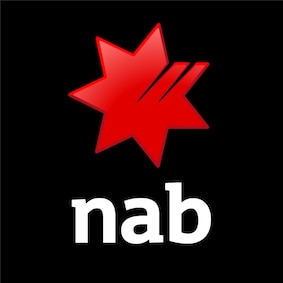International trade | payment methods | manage payments - NAB
Payment methods
-
The importer pays the exporter using telegraphic transfer (PDF, 172KB) before the exporter ships the goods.
Risk level:
- For importers —considered to be high risk as you pay for your goods before your exporter ships them.
- For exporters —considered to be low risk as you get paid before you ship the goods.
-
The importer pays the exporter using a letter of credit after the exporter ships the goods.
A letter of credit is an undertaking given by a bank to pay the exporter provided they fulfil its terms and conditions. Payment can be due immediately ("at sight") or at a later date ("term") that both the importer and exporter agree to.
Risk level
For importers – considered to be medium risk as there's some assurance that the exporter has shipped the goods before you have to pay.
You need to organise a letter of credit facility before a letter of credit can be issued.
For exporters – considered to be low to medium level of risk as the issuing bank will pay for the goods you ship as long as you fulfil all the terms and conditions of the letter of credit.
It's important to understand the credit risks of the issuing bank and their country before you agree to this arrangement.
Learn more about export, import and domestic letters of credit (sight and term).
-
The importer pays the exporter after the exporter ships the goods.
The importer needs the shipping documents to clear goods on arrival. The bank holds the documents until the importer pays for the goods.
This is called a "sight" payment, sometimes known as "Documents against Payment" or "D/P".
Risk level
For importers – considered a medium level of risk as there's some assurance that the exporter has shipped the goods before you have to pay.
For exporters – considered as a medium level of risk as the goods you've shipped usually get released to the importer after they pay.
Air freight companies usually release goods to the importer immediately, even though they may not have paid.
Learn more about export, import and domestic collections documentary sight or term bills.
-
The importer pays the exporter after the exporter ships the goods.
The importer needs the shipping documents to clear goods on arrival. The bank holds the documents until the importer undertakes to pay for the goods at a later date.
This is called a "term" payment, sometimes known a "Documents against Acceptance" or "D/A".
Risk level
- For importers – considered to be a medium to low level of risk as you will be able to receive and inspect the goods before you have to pay.
- For exporters – considered to be a medium to high level of risk as the goods you have shipped will be released to the importer when they undertake to pay at a later date. The importer may not honour this undertaking if there is a dispute or if they are experiencing payment difficulties.
More information can be found on our export, import and domestic collections documentary sight or term bills page.
-
The importer pays the exporter by telegraphic transfer after the delivery of goods.
Risk level:
- For importers – considered to be a minimal level of risk as you pay after you have received the goods.
- For exporters – considered to be a maximum level of risk as you have released control of the goods before they have paid.
How to manage your payments
-
Use Trade Finance Online software via NAB Connect to pay and manage outstanding Letters of Credit or receive Export Letters of Credit and monitor outstanding transactions.
-
Send money overseas using a telegraphic transfer. For international telegraphic transfers you can also apply using NAB Connect or NAB Internet Banking.
Download the International Telegraphic Transfer Application (PDF, 172KB).
-
If your trade deals need a letter of credit for payment to your supplier or you’d like to make a change to existing instructions, complete the form below. You’ll first need a letter of credit facility to apply for or amend a letter of credit.
-
If you need to send trade documents to your buyer via documentary collection to complete your deal complete the relevant form below. Submit through your local branch or banker with a bill of exchange.
- Lodgement Authority – Overseas Documentary Bills (PDF, 206KB)
- Lodgement Authority – Documents under Letter of Credit (PDF, 165KB)
- Trade Export Service Nomination form (PDF, 318KB)
- Bill of Exchange to order of NAB in duplicate (PDF, 83KB)
- Bill of Exchange to order of NAB in sola (PDF, 305KB)
- Bill of Exchange blank, in duplicate (PDF, 214KB)
-
NAB now offers real time international payment status tracking through NAB Connect.
Don’t have NAB Connect? Register now

More information
Get in touch
Contact us
Visit our business banking contact page for how-to-guides and FAQs, as well as contact numbers.
Visit a NAB business banking centre
Let our business banking specialists help you in person.
Important information
Apologies but the Important Information section you are trying to view is not displaying properly at the moment. Please refresh the page or try again later.


